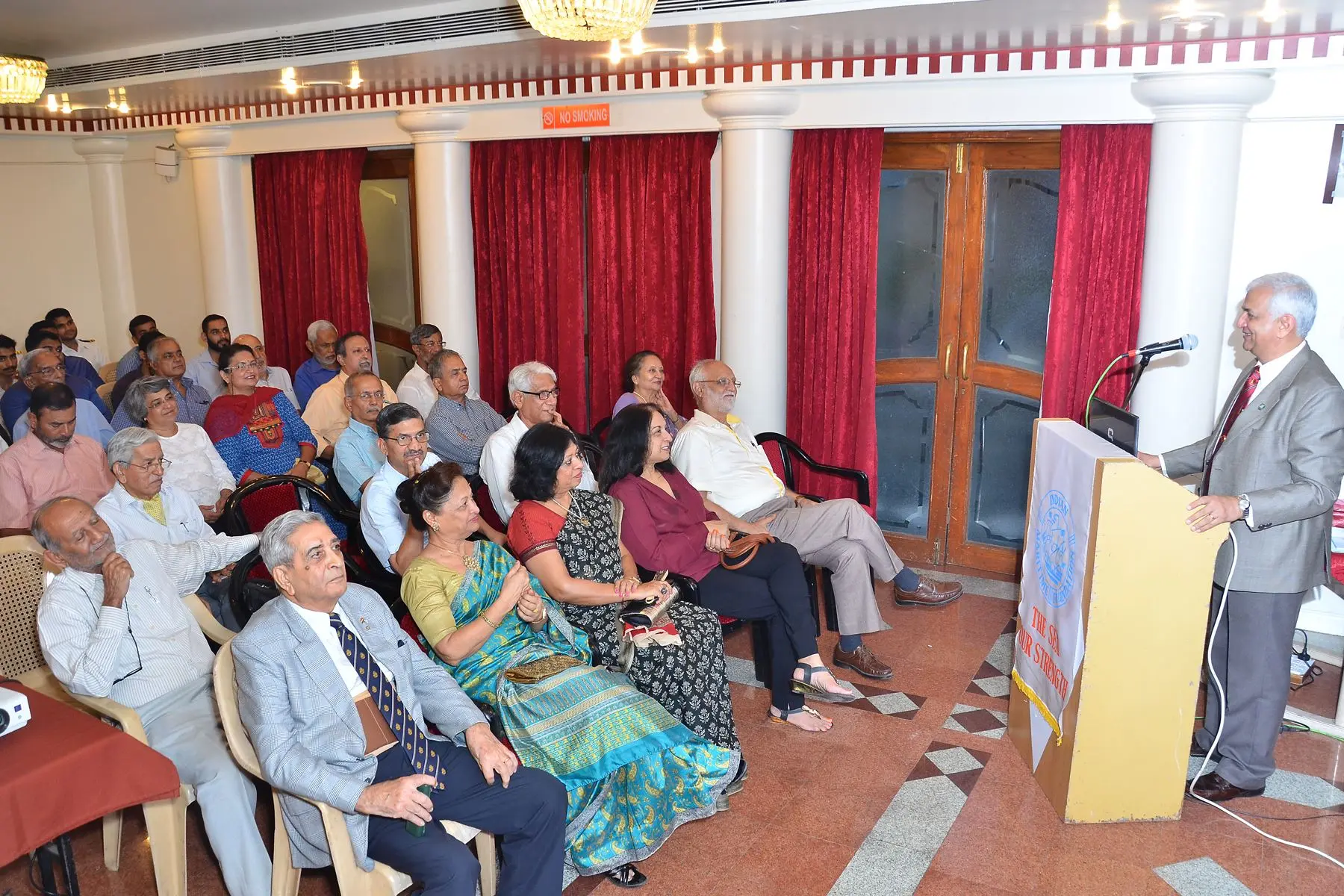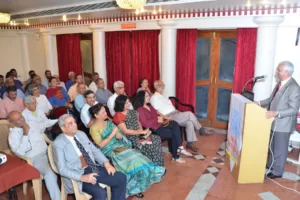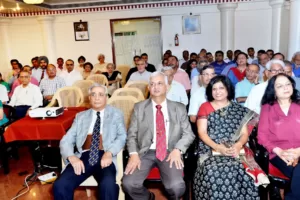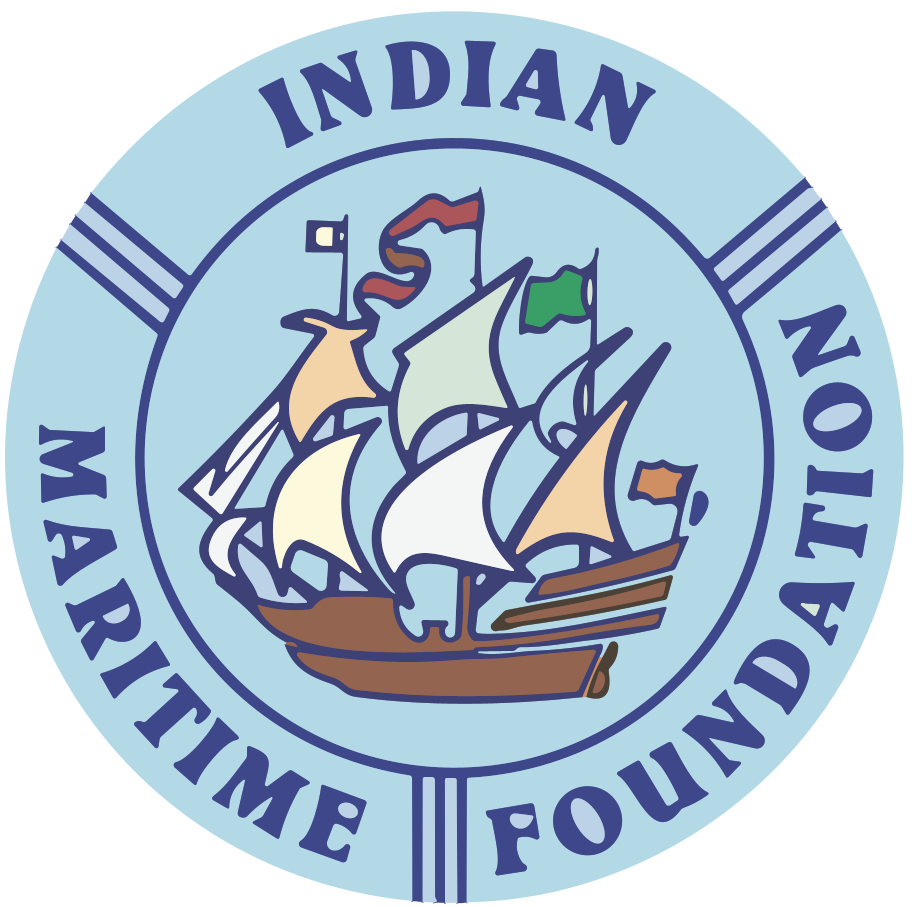
2nd Maritime Security Lecture by VAdm Pradeep Chauhan
A lecture on Maritime Security (the second in a series of three) was delivered by Vice Adm P Chauhan (Retd), at the Royal Connaught Boat Club on 19 Apr 2016 The lecture had an overwhelming response, and extra seating arrangements were required at the last minute.. Cmde Rajan Vir, President IMF delivered the welcome address, and pointed out how historians had distorted our history by telling us “how we won our freedom, but not how we lost it”. India as a maritime power was in decline by the 13th century, and by the 17th century, instead of building ships and creating maritime infrastructure, importance was given to building the Taj Mahal and other grand mausoleums. The result – India was repeatedly defeated and subjugated by much smaller countries, through their maritime might. At the Indian Maritime Summit held recently, India and the US signed an unprecedented and historic logistics agreement, which is a watershed in relations with the US. This is important, as 90% of the world trade (by qty) and 70% by value, plies through the seas.
Vice Adm Chauhan commenced his talk in his inimitable witty style and the lecture was peppered with humour that kept the audience riveted to his presentation. He began with a brief recap of the first lecture delivered in March, which covered the creation, development and sustenance of a blue water economy, ability and means to detect/ intercept vessels and stability in the neighbourhood (`conflict causes poverty’).
He began the second lecture by illustrating how geographic location and orientation lead to the development of a geo-strategy -`Where we stand, depends on where we sit ‘. Amongst the list of imports, oil, by far figures as the largest single commodity, both by value ($ 56bn), as well as volume of traffic. As all of India’s crude comes from the west, we are dependent on the `choke points’ in the sea lanes i.e Bab-el-Mandeb and Port Said. Therefore, our presence in the area is essential, as our energy security demands the secure passage of energy. India is the world’s third largest exporter of petro products ($61bn), and this again by far is the largest product exported to numerous countries in the East and West. Therefore the Malacca Strait to the east again forms the choke point, through which most of our eastbound trade is dependent on. The `openness index’ of sea routes (trade value/GDP) is the guiding factor on the importance of sea lanes and helps focus on the choke points.
He pointed out that, sea trade essentially depends on the economy of scale, and large vessels are a must to fulfil this requirement.. Therefore, the condition, class and age of vessels has an effect on how we trade. Of the 1204 registered Indian vessels, 30% are sea-going (corresponds to 82% of tonnage engaged in overseas trade), while 70% are engaged in coastal trade (11.8% of tonnage). Fifty per cent of the vessels are more than 20 years old, which obviously means that they cannot fulfill our current needs nor compete with global standards. India has only 19 container vessels with the largest being of 4500 TEU capacity. As against this, just one Chinese company alone has over 19 vessels of over 10,000 TEU capacity. SCI has only 2 VLCCs capable of carrying 300,000 DWT and ranks 22nd among the 30 top tanker companies. SCI does not own an LPG carrier and has taken two vessels on charter. SCI does not possess or operate an LNG carrier.
The direction and extent of trade with our trading partners is another important factor in maritime security. Earlier it was the US which was our largest trading partner, however, this has changed to intra-Asian trade and trade with developing countries, in the past few years. With this change, the issue of providing security to trade assumes importance. However, the ownership of the vessel, nationality of crew, flag state of the vessel and the destination of the cargo, many times, makes this a difficult task. In 1998, 34% of cargo was through protected waters and 66 % unprotected. In 2015, the figures were 8% and 92 % respectively.
The location of Ports and important facilities are vital to our energy security. Again focusing on oil, which is the most vital commodity, all VLCCs off-load their crude via SPM (SBM), which is then pumped to the refinery. All SBMs are on the west coast and located in Gujarat. The others proposed, are again on the west coast but further south. The west coast is interconnected by pipelines running up to refineries located at Panipat and Mathura. As the Kandla SBMs are vital to our energy security, but highly vulnerable to acts by our neighbour, we must have an alternate plan like SBMs on the east coast, say at Paradeep. A brilliant idea, but there is a problem. There is no pipeline from Paradeep (or any port on the east coast) to either Mathura or Panipat! This lop-sided planning of infrastructure leads us to only two alternatives i.e. transfer the oil from a 300,000 DWT VLCC to Panipat or Mathura by either rail or by road. The magnitude of this problem brings us to some hilarious and impractical figures. We will require over 12,000 railway oil wagons and in all 160 trains to transfer oil from one VLCC! By road, we will need close to 40,000 oil tankers to transfer oil by road all the way to the refinery! Coastal security near the existing SPMs must therefore be at the very top of the oil security agenda, and both the navy and the coast guard have an important role to play here. Having talked about the Oil Security, let’s move on to the Gas situation. We have gas pipelines all over India, but no gas (LPG or LNG) carriers. How have we come to this pass, and how was it allowed to happen? Through this revelation, he made a pertinent point are the right questions not being asked to get answers?
So what is the state of our energy resources and future needs? Our indigenous oil production caters to barely 19% of our total requirement of oil. Our indigenous LNG is consumed mainly in the fertilizer (32%) and power generation (31%). As of Jan 2015, our power generation was 258 GWe (Giga Watt eqvt). By 2050 this figure will rise to 1094 GWe. How do we meet this? According to DAE figures the total nuclear power is 47.64 GWe + 5.88 GWe (in pipeline) =53.52 GWe. According to DAE’s projections, this figure will be 700GWe by 2060. All renewable energy combined makes up only 71 GWe. Where is the balance energy going to come from?
In conclusion, he spoke about the importance of integration of Renewable Energy in our power grid, which is presently not possible, as ancillaries are not in place. We need to change over to smart grids with ancillaries, to harness all forms of electricity generation. This brings us to the alternative sources of energy – Solar, Wave, Tidal and Ocean energy thermal conversion (OTEC). India is blessed with a large coastline, with huge tidal fluctuations in some areas. We have 6 sites for wave energy generation, and two of the 20 sites worldwide, ideal for tidal generation, are in India. We already have a thermal plant (OTEC) producing electricity in Lakshadweep. The OTEC plant also produces a large amount of freshwater as a by-product. We need to have mitigating strategies for various forms of energy and harness these quickly.
The talk was followed by a brief question and answer session, after which Cdr Sati Taneja made the closing address. Cdr Mukund Yeolekar gave the vote of thanks.









